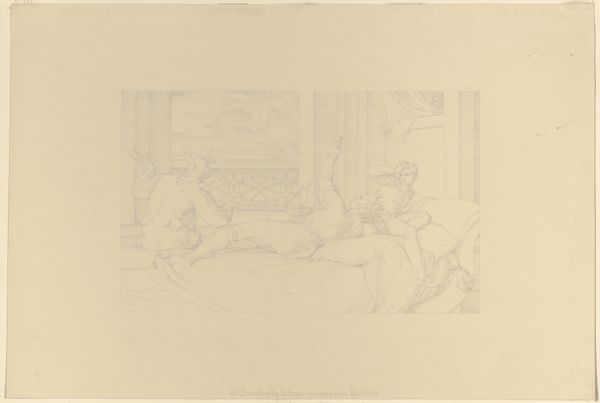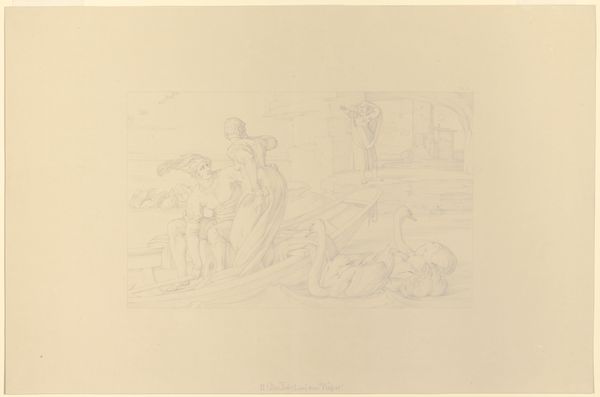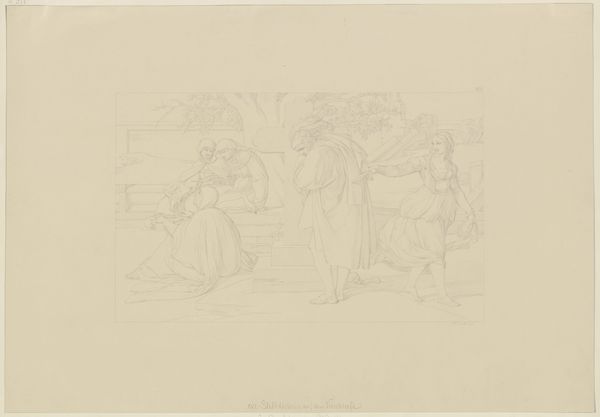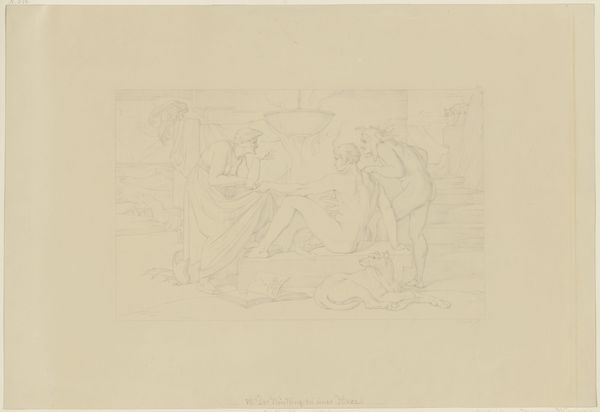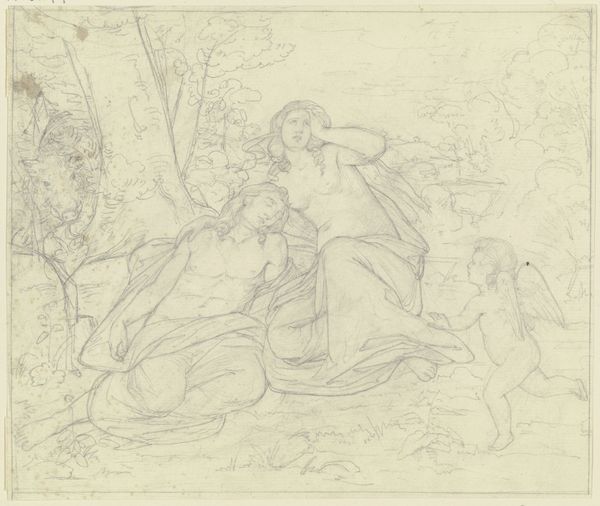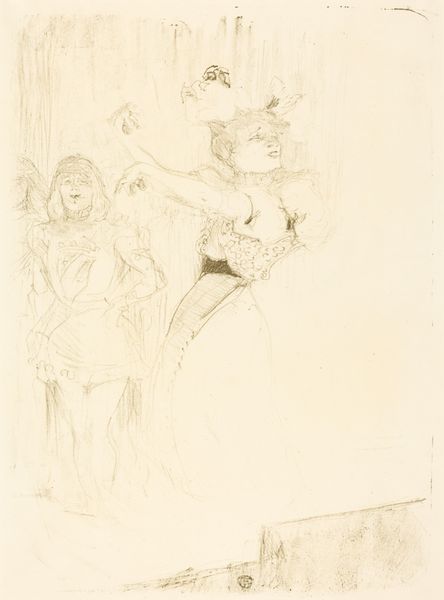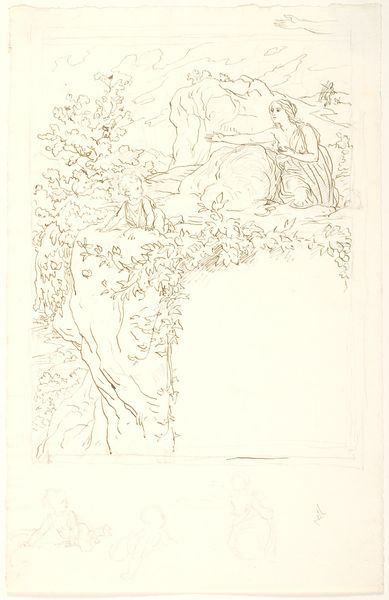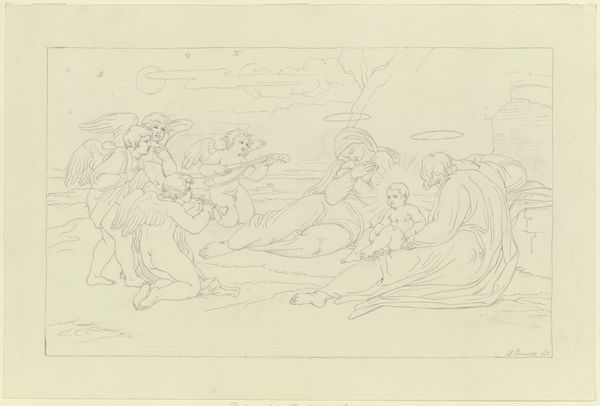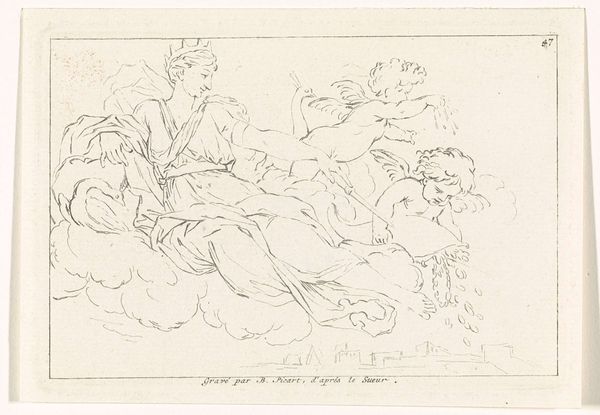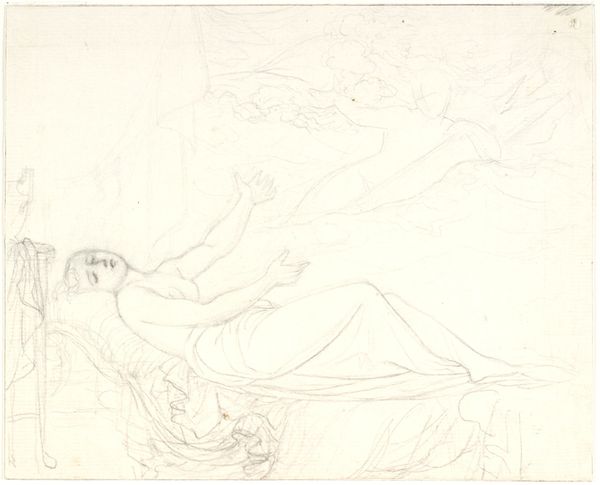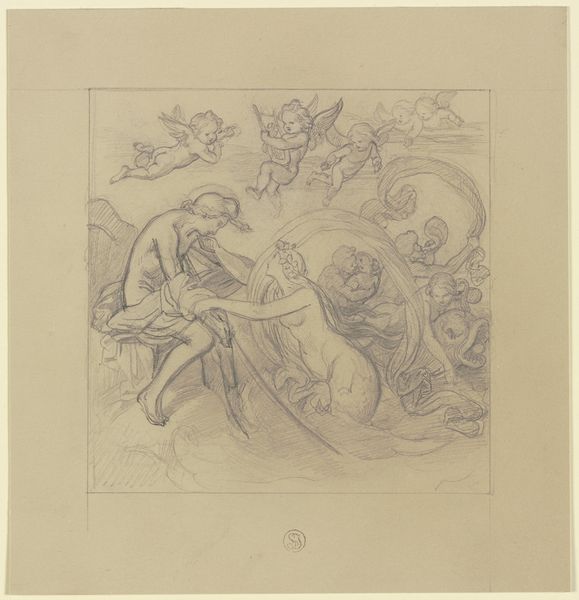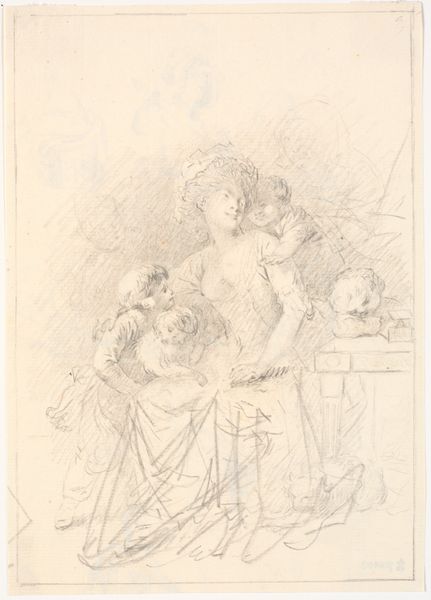
_Aus dem Leben eines Wüstlings__ IV. Verhöhnung jüdischer Gläubiger 1845
0:00
0:00
drawing, pencil
#
drawing
#
ink drawing
#
narrative-art
#
pen sketch
#
pencil sketch
#
figuration
#
romanticism
#
pencil
#
history-painting
Copyright: Public Domain
Editor: This is Bonaventura Genelli’s, *From the Life of a Libertine IV. Mocking Jewish Creditors,* created in 1845 using pencil and ink. It's delicate but conveys a sense of cruelty and casual antisemitism through the gestures of the figures. What strikes you most about this work? Curator: I am drawn to the relationship between the drawing’s apparent fragility and the brutality it depicts. Look closely at the visible labor – the tentative lines, the building up of the forms with such simple tools: pencil and ink on paper. Consider, too, the social context: the burgeoning capitalist system, anxieties around wealth, and the scapegoating of marginalized communities. What labor do you think went into the materials used for this artwork? Editor: Well, someone had to manufacture the pencil, process the ink, and produce the paper... all industries relying on varying levels of labor exploitation. But the drawing itself seems so removed from that reality. Curator: Precisely! The Romantic era often obscures the means of production, fetishizing the artist's "genius." But what happens when we consider the making of art as part of a broader system of production and consumption? Are we complicit when we consume these types of images? Editor: That’s a powerful question. We can't ignore the social and economic conditions under which it was made. Do you think that affects how we should view it today? Curator: Absolutely. Recognizing the processes and social contexts inherent in its creation allows us to confront its problematic elements, even as we acknowledge its formal qualities. We’re implicating it. Editor: That perspective offers a deeper understanding, beyond just aesthetic appreciation, doesn't it? Curator: It forces us to be responsible viewers and acknowledge labor, context, and potentially ugly ideologies as intrinsic parts of art. Editor: I appreciate you bringing the making of this art object back down to Earth; it highlights our ethical responsibility as viewers of art.
Comments
No comments
Be the first to comment and join the conversation on the ultimate creative platform.
